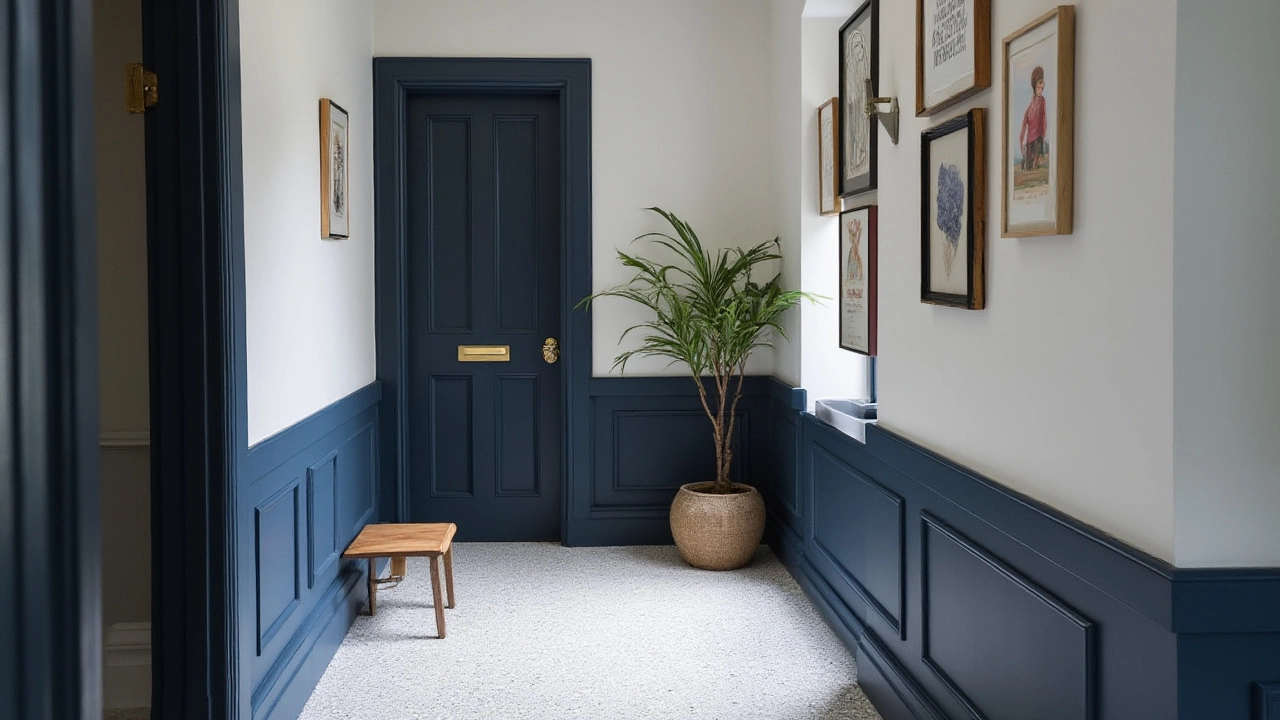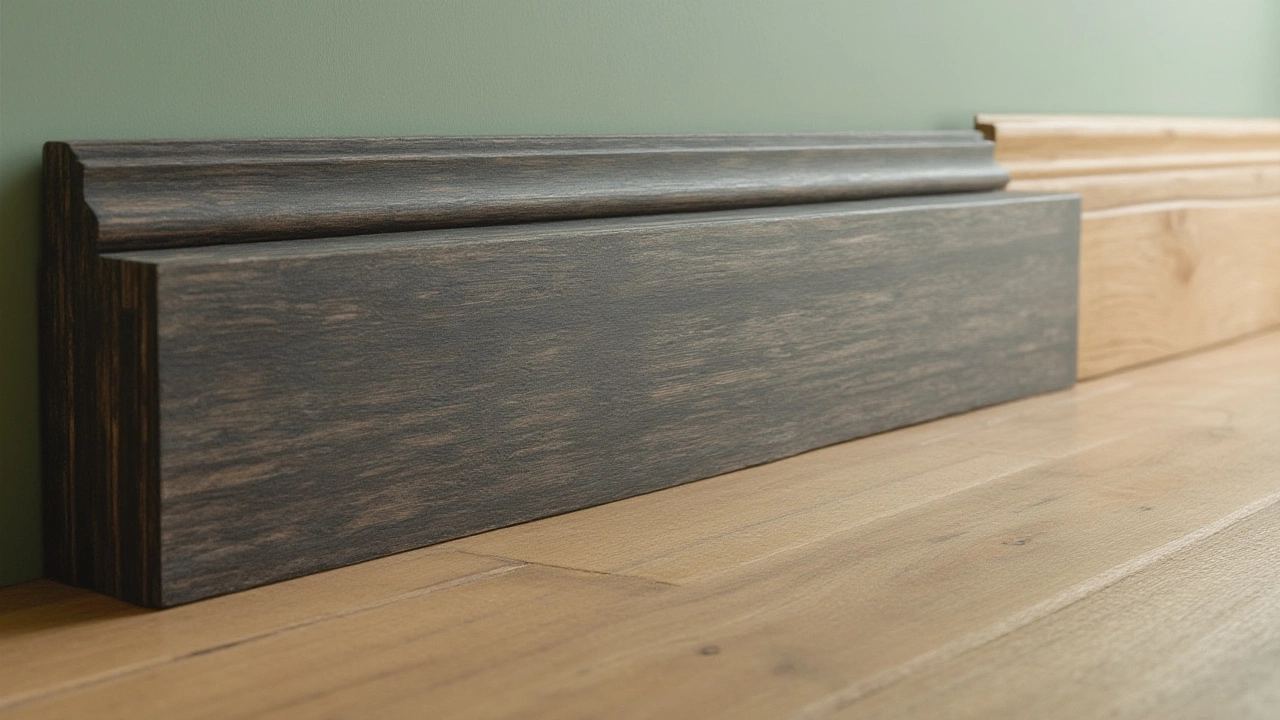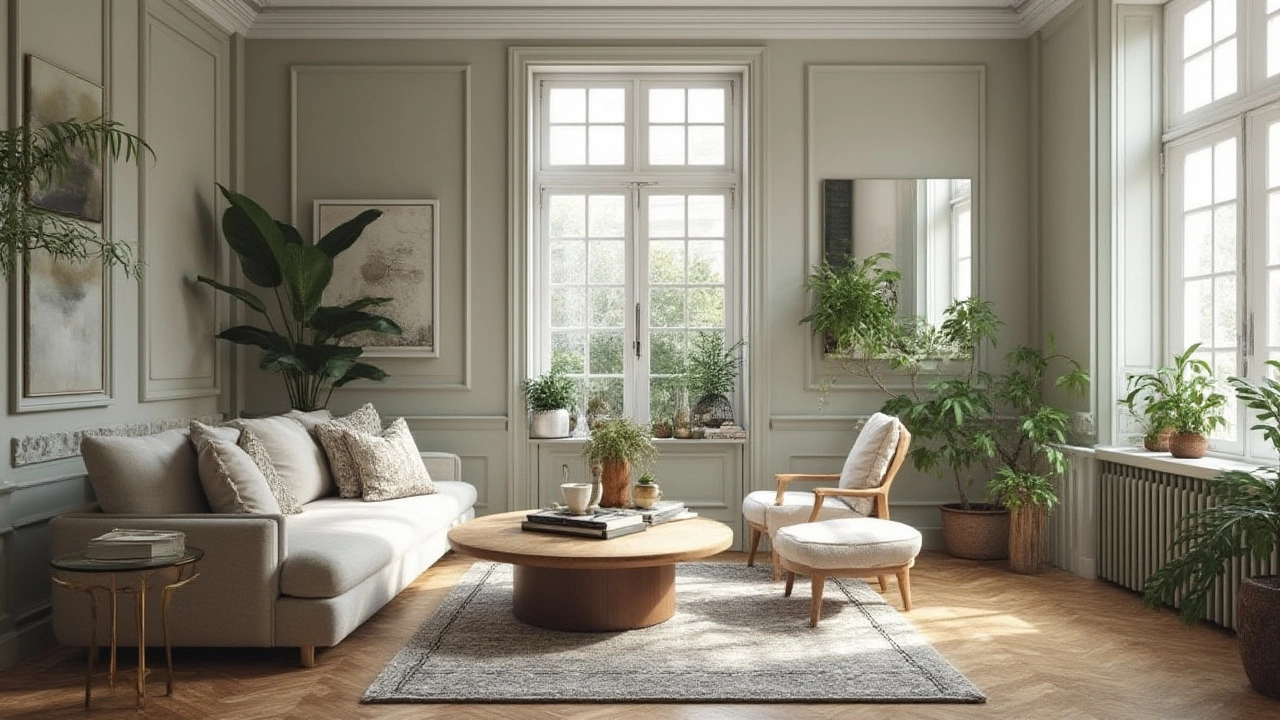The phrase “baseboard trends” might sound like something only a serious renovator would care about, but if you’ve browsed Instagram home tours or new construction in 2024, you know that baseboards can totally change the whole vibe of a room. Weird, right? That slim strip at the bottom of your walls could decide if your living room looks crisp and contemporary or stuck in the past. And yes, builders, designers, and even interior design nerds have very strong opinions on which trim is hot… or absolutely not.
The New Look of Trendy Baseboards in 2024
If you remember the chunky, super-detailed trim that used to rule the world of suburban homes, you’ll notice we’ve swerved in the opposite direction lately. In 2024, baseboards are all about simplicity, but with thoughtful style upgrades. Gone are the days of those huge colonial swirls or teensy quarter-inch strips that look like an afterthought. So, what’s dominating new builds and reno projects?
The most popular baseboard height this year is 5½ to 7 inches—think taller profiles, but not so large they’ll swallow the room. Homeowners want trim that stands out just enough to frame a wall without overpowering. The design is super streamlined: flat or subtly rounded edges, nothing too fussy. People are really into the flat ‘modern craftsman’ style, where the plank has just a little bullnose curve at the top. No ridges, no ribbons, no strange grooves from the nineties—and if you still have those, secretly yes, people do notice.
If you care about staying on-trend, white remains the go-to baseboard color. But it’s not just the classic glossy “contractor white.” Matte and satin finishes are big this year, giving a quieter, less flashy vibe. Plus, designers are leaning into painted baseboards, especially for high-impact rooms. Think charcoal, navy, even sage green, or that mushroom taupe that’s popping up everywhere. Color-matching baseboards to the wall is having a moment—it makes walls look taller because your eyes don’t stop at a sharp color break. But there’s a twist: instead of plain wood or plastic, baseboards in 2024 are getting upgraded materials like moisture-proof MDF, PVC for bathrooms, or, if you’re feeling fancy, custom wood in walnut or white oak.
What about profile? People want that flat, squared-off look. Maybe a micro-bevel at most. Price isn’t the only reason—you can’t beat the sleek, unfussy lines in a modern scandi, mid-century, or contemporary room. But, here’s a wild fact: according to a real 2024 survey by the National Association of Home Builders, 72% of new home buyers said they preferred simple, wide trim over ornate or super-skinny. When’s the last time you even noticed baseboard style at a friend’s house? Turns out, most people do—especially if you have contrasting floors or colored walls.
So, if you’re standing in the hardware store thinking “do baseboards really matter?”... well, if you skip them or go with the wrong style, your fresh paint job could look unfinished or awkwardly retro (not the good kind). So it’s worth paying attention!

Colors, Finishes, and Custom Touches: What Makes 2024 Different?
Let’s talk color, because baseboards are not just white anymore. In 2024, designers are taking more risks. The classic white baseboard is still popular, especially in open concept spaces and with light walls, but new-build homes and remodels are showing off baseboards painted the same color as the wall (tone-on-tone), or even in a bold accent color to add a subtle “pop” without overwhelming the room.
Here are some quick facts about baseboard finishes that are getting attention this year:
- Matte or satin finishes cut down on glare, dust visibility, and weird shadows. If you’re painting them yourself, a water-based enamel is easier to touch up than the old oil-based look.
- Homeowners are going for durability, especially with families and pets. Scratch-resistant paints or even vinyl wraps are trending, especially in high-traffic hallways and kid rooms.
- Natural-stained wood is making a return, but we’re not talking yellowish builder-base oak. It’s about deep walnut, wire-brushed white oak, or rich espresso. Pair that with pale walls for a look that’s both warm and modern.
- People living in damp climates are snapping up synthetic materials (PVC, polystyrene) since they never warp or mold if you flood your bathroom. In fact, if you go for MDF, make sure it’s the green, moisture-resistant kind!
- Hot tip: dark baseboards with light floors make your room feel grounded and more “architectural”. A few high-end builders are even doing black baseboards with white walls for a super graphic look—super Instagrammable, but does show dust, so keep that vacuum nearby.
Custom details are everywhere, too. Some people are layering their baseboards over the wall to create a matching, trim-all-over wainscoting look. Others are ditching quarter-round shoe molding (a tiny extra layer at the floor) for a streamlined vibe, or blending in door casings and window trim so it all matches. There are even companies cutting baseboard to fit custom LED light strips behind, so your hallways and bedrooms glow at night without visible fixtures.
| Baseboard Feature | Top Trend 2024 | Classic Option |
|---|---|---|
| Height | 5.5-7 inches | 2.5-4 inches |
| Color | Wall-matched, dark hues, wood stain | Glossy white |
| Material | PVC, moisture-proof MDF, walnut/oak | Pine or basic MDF |
| Profile | Flat, squared-off, micro-bevel | Ornate/colonial |
| Finish | Matte, satin, scratch-resistant | High-gloss oil |
People get surprisingly creative: I’ve seen homeowners install super-tall 10-inch baseboards in their entryway just to make the space look more luxe. One family painted all their bedroom baseboards the exact same teal blue as their headboard wall—result, it looked seamless and modern. And the best part? Most of these upgrades are easier than you think if you don’t want to hire a pro (just remember, caulking is your friend, and measure twice before cutting anything).

Making Baseboard Choices That Actually Work for Your Home & Style
You can scroll through countless Pinterest boards, but it doesn’t help much if you don’t know where to even start. Picking baseboards comes down to a few practical things: ceiling height, floor material, wall color, how much you value easy cleaning, and, of course, your budget. Money-saving tip: the taller and fancier the baseboard, the higher the cost—and don’t forget installation. Materials can range from dirt-cheap (pine or polystyrene) to wow-that’s-pricey (custom hardwood or factory-finished trim).
If your ceilings are 8-foot, you usually want 4½- to 5-inch trim. Taller ceilings? You can go up to 7 inches or even 8 for a “grand” effect, but don’t drown your walls in wood unless you’re also cool with a bolder look. Small rooms usually look better with slim, square-edge baseboards that don’t make the space feel boxed in. If you’re in a modern condo, stick with flat slab trim—trust me, it just fits the style. But if you’re restoring a historic home and want some wow-factor, you can still find traditional profiles, just skip the overly fussy, swirly look that reads as dated in 2024.
Color-wise, if your walls and trim are already light, try a low-contrast color to keep things serene and modern. Going for a bold accent baseboard? Stick with one dramatic color per room so things don’t get chaotic. And yes, you can mix and match—use bright white for public spaces, and an accent shade in bedrooms for a cozy feel. Just keep all the doors and frame trim in the same finish and tone or things will get wild fast.
If you’re DIY-ing, invest in decent caulk (for smoother lines against wonky walls), pay attention to inside and outside corners, and paint or finish your trim before installing—it saves mess in the long run. Can’t match your exact existing trim? Go for something purposely different so it looks intentional, not mismatched. Custom baseboards are a thing, too—local millwork shops can cut nearly any profile in any hardwood, but know your budget, since that cost climbs fast, especially for larger homes.
If you’re curious what trendsetters are doing, minimalist trim is everywhere, but subtle details matter. Keep corners crisp but not sharp (rounded edges hide wear and cleaning marks). You don’t have to splurge on high-end material in every room; lots of folks use fancier trim for entryways and simple stuff for bedrooms or basements to keep costs down.
Designers in 2024 are paying attention to the edge where baseboard meets wall and floor—seamless looks are winning the style wars, so nail or glue down trim tightly, and paint the base, quarter-round, and caulk to all match perfectly. For allergy-prone homes, PVC trim won’t trap as much dust, and smooth surfaces are easier to wet-wipe clean. If you adore color, remember that dark tones catch lint, so keep a dustbuster handy.
So don’t ignore your baseboards—they literally form the foundation of your whole home’s look. Whether you’re building, renovating, selling, or renting, modern baseboards can make a place feel fresh, stylish, and up-to-date without a ton of cash or effort. With just a few boards, the right finish, and a little paint, even the most basic room can feel Instagram-worthy. Give it a try and watch the compliments roll in.
